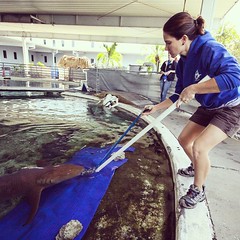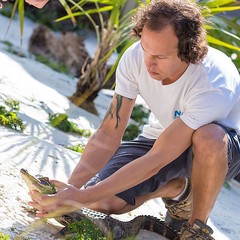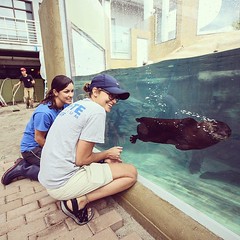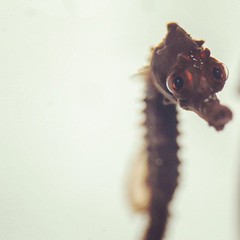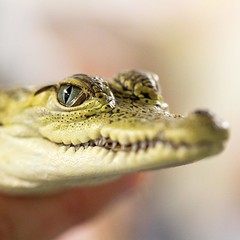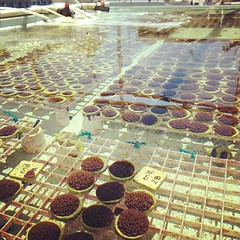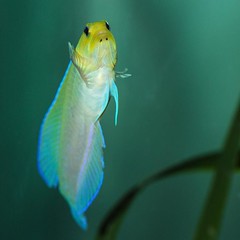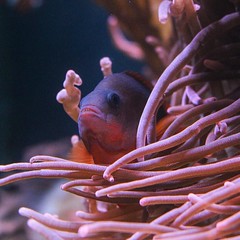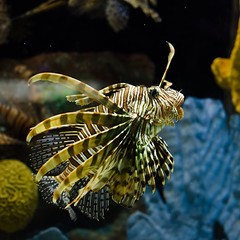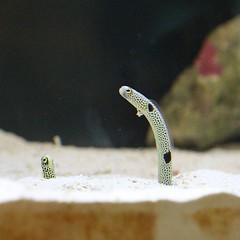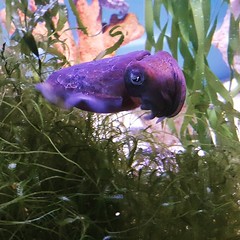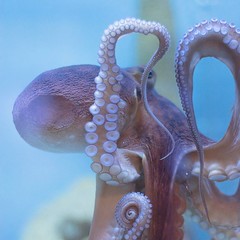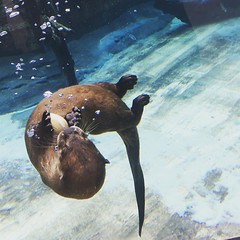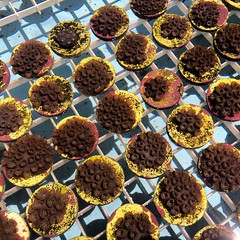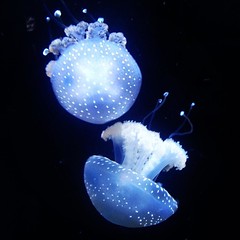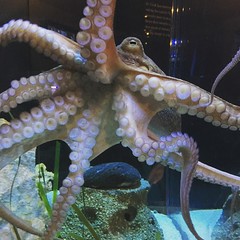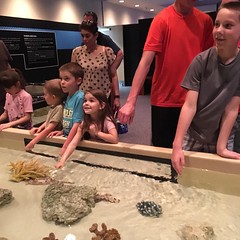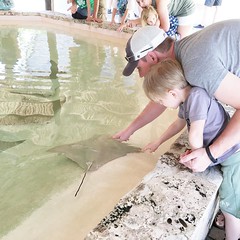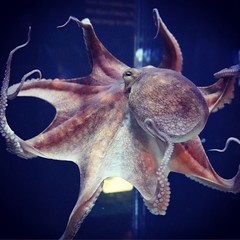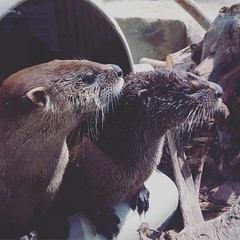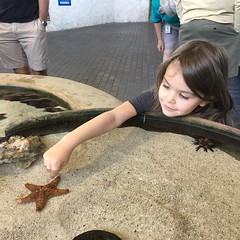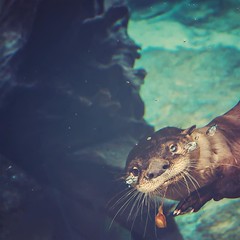1600 Ken Thompson Parkway
Sarasota, FL 34236
Ph: (941) 388-4441
Hours: 10AM - 5PM
A 501(c)3 nonprofit organization.
Grizzly
Kemp's ridley (Lepidochelys kempii)
| Age Class | Juvenile |
| Gender | Unknown |
| Date Stranded | October 18, 2012 |
| Location of Stranding | Lee County, Florida |
| Date of Arrival | October 18, 2012 |
| Number of Days of Care | 48 |
Final Disposition
Released 6 December 2012

Grizzly upon arrival.
10/19 Turtle was found floating in seaweed by a dock in a red tide area. There are no typical outward signs of red tide exposure noted. Upon being put into the water at Mote, turtle seems to be exhibiting neurological issues — significant head tremoring back and forth and swimming in circles. We are suspicious of red tide exposure. Turtle is also bruxating (involuntary grinding of beak), which may also be another indication of red tide exposure. Blood work indicates low calcium and iron levels. Turtle not taking food offered and will be started on fluid therapy.
10/20 Turtle started on iron and calcium injections. We are continuing to monitor neurological symptoms. Turtle started eating some food offered.
10/23 Neurological symptoms are improving daily. Turtle is eating better, fluid therapy is discontinued and calcium supplements will be administered orally.
11/8 Turtle is actively foraging and eating on its own. It is active and swimming well, neurological symptoms have subsided.
12/3 Turtle was tagged.
12/6 A satellite transmitter was affixed to the turtle's shell as part of an ongoing study of Kemp's ridley turtles. The turtle was released!
A Note About Red Tide Exposure: Samples of feces and plasma indicate that this turtle has red tide exposure. As part of Mote Marine Laboratory's ongoing red tide research efforts, this turtle will become part of a research study looking at the effects of red tide on the immune systems of marine vertebrates exposed to red tide under the direction of Dr. Deborah Fauquier, Mote adjunct researcher. Fauquier's previous research, which has included studies of sea birds, has shown that sea birds can clear the red tide toxin from their systems within 10 days of rehabilitation, but that it may take up to 50 days for sea turtles to clear the toxin. Her research, funded by the Morris Animal Foundation, has also shown that animals can develop red tide intoxication several months after an active bloom by eating red-tide contaminated prey.
Fauquier is currently investigating a potential treatment to rid the animals of the toxins. Cholestyramine, a bile acid binder, has been used to treat cases of toxin exposure in humans and may be a useful treatment for brevetoxin exposure in loggerhead sea turtles and double-crested cormorants, a common marine bird. Scientists are testing the addition of cholestyramine to the standard treatment regimen of fluid therapy and tube feedings.
In the Fall/Winter of 2011, a red tide event occurred in the study area. Two Kemp’s ridley sea turtles were found suffering from red tide intoxication and taken to Clearwater Marine Aquarium for treatment. One turtle was started on fluid therapy and cholestyramine and one turtle received no cholestyramine treatment for comparison data. Unfortunately, there was no significant increase in toxin elimination in the cholestyramine-treated turtle.
This may be due to gastro-intestinal foreign bodies that were present in the treated turtle. Researchers observed no side effects from treatment with cholestyramine and both turtles cleared the red-tide toxin with no further neurological symptoms. Researchers will continue to collect data and treat patients as red tide events occur. They hope that adding cholestyramine to the standard of care protocol will lead to quicker elimination of toxins and increased survival in animals affected by red-tide events.
